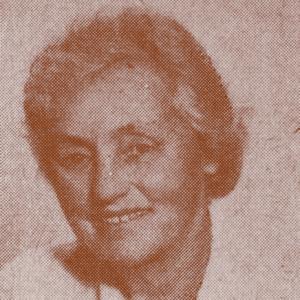Barbara Brukalska facts for kids
Barbara Brukalska (born December 4, 1899 – died March 6, 1980) was an important Polish architect. She was known for her ideas about Functionalism, which means designing buildings to be very practical and useful. Barbara was also part of a group called Praesens and taught at Warsaw Polytechnic. Her husband, Stanisław Brukalski, was also an architect.
Contents
About Barbara Brukalska
Barbara Brukalska was born in Brzeźce, Masovian Voivodeship, Poland. She often worked with her husband, Stanisław Brukalski. They were both part of a group called Praesens, started in 1926.
Designing Practical Homes
The Praesens group was inspired by architect Le Corbusier. He had an idea that a house should be like a "machine for living." This meant homes should be very efficient and simple. Barbara and her group wanted to design affordable, practical homes for everyone.
Barbara had many ideas for the inside of these homes. She thought kitchens and dining rooms could be combined into one space. She also believed furniture should be very simple and only include what was truly needed. She designed clever built-in closets, tables, sinks, and stoves. These designs were meant to be super practical and easy to keep clean.
For kitchens, Barbara even suggested white walls, white floors, and white surfaces. She wanted them to be as clean and organized as a laboratory. She once said that they showed kitchens already furnished. This was because regular tables and sideboards often didn't fit well in small spaces. From 1927 to 1938, the Brukalskis also designed the insides of passenger ships.
Challenges and New Ideas
It was sometimes hard to get money to build these simple homes for workers. Also, some people were not very keen on living in such extremely practical houses. Despite these challenges, the Brukalskis kept working on their vision.
They continued to design simple furniture. They showed their ideas at exhibitions like "Smallest Apartment" in 1930. They also participated in a competition called "Interior" in 1932. Another exhibition was held in houses of the Warsaw Society of Workers Estates in 1935.
After World War II
During World War II, Stanisław Brukalski was held in a German prisoner-of-war camp. After the war, Barbara and her husband worked more on their own. They mostly designed buildings in Warsaw. They started to move away from the very strict Functionalist style. Instead, they began using more natural shapes and ideas from older buildings.
Barbara designed several important projects. These included a housing area in Okęcie and the Matysiak Retirement Home. Both Barbara and Stanisław also became professors at Warsaw Polytechnic. Barbara Brukalska passed away in Warsaw.
Key Buildings and Projects
Here are some of Barbara Brukalska's important works:
- Housing complexes IV, VII, and IX in Żoliborz district Housing Cooperative (1927-1939)
- 8 Niegolewski St. in Warsaw (1927-1928)
- Reconstruction of Dom pod Orłami (House under the Sign of the Eagles) in Warsaw (1948-1950)
- Matysiak House in Warsaw (1956)
- Church in Troszyn (1956-1975)
- Housing development in Okęcie district of Warsaw (1960)
- House of Parliament, interior (1964)
- Church in Sypniew (1971-1974)
See also
 In Spanish: Bárbara Brukalska para niños
In Spanish: Bárbara Brukalska para niños


